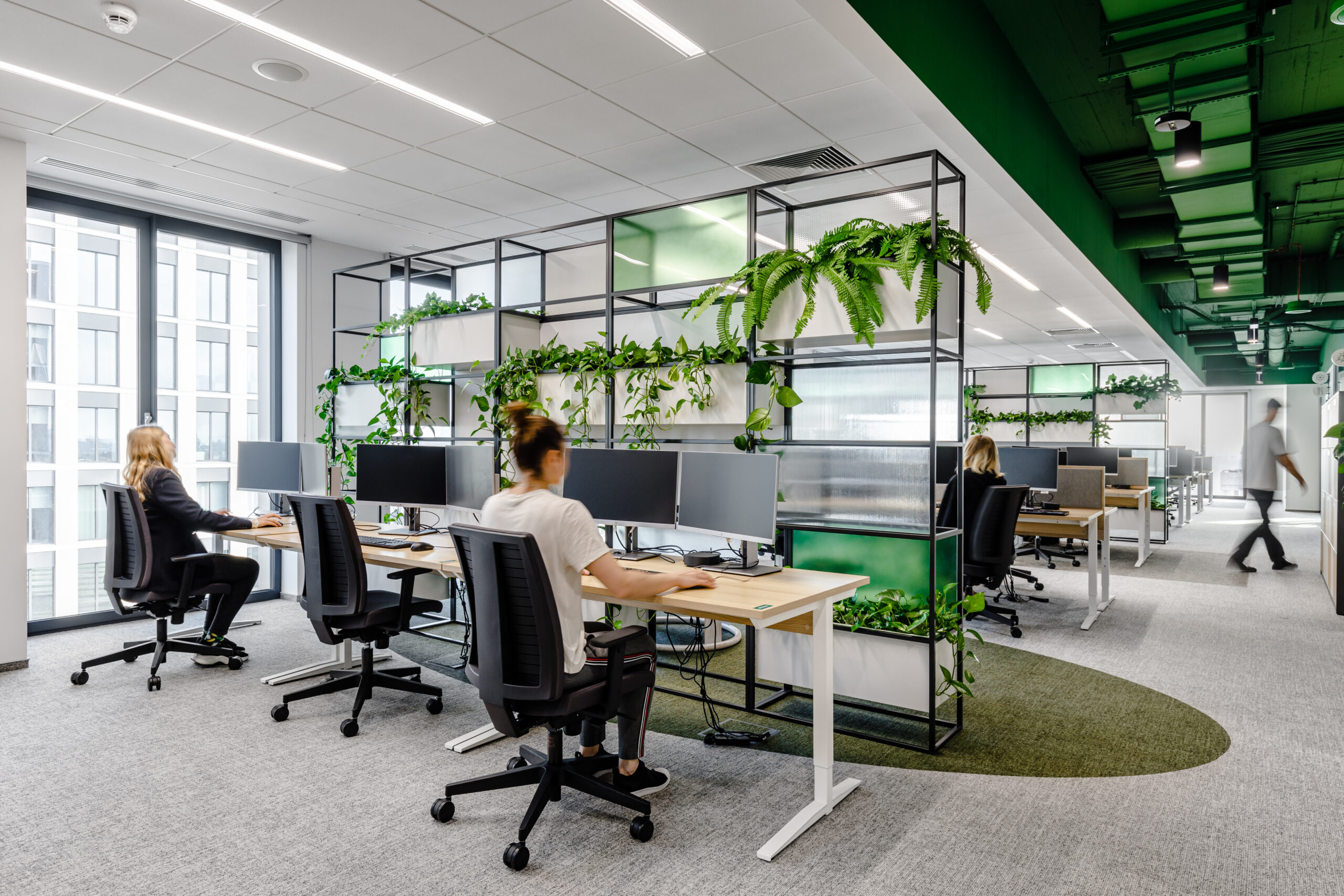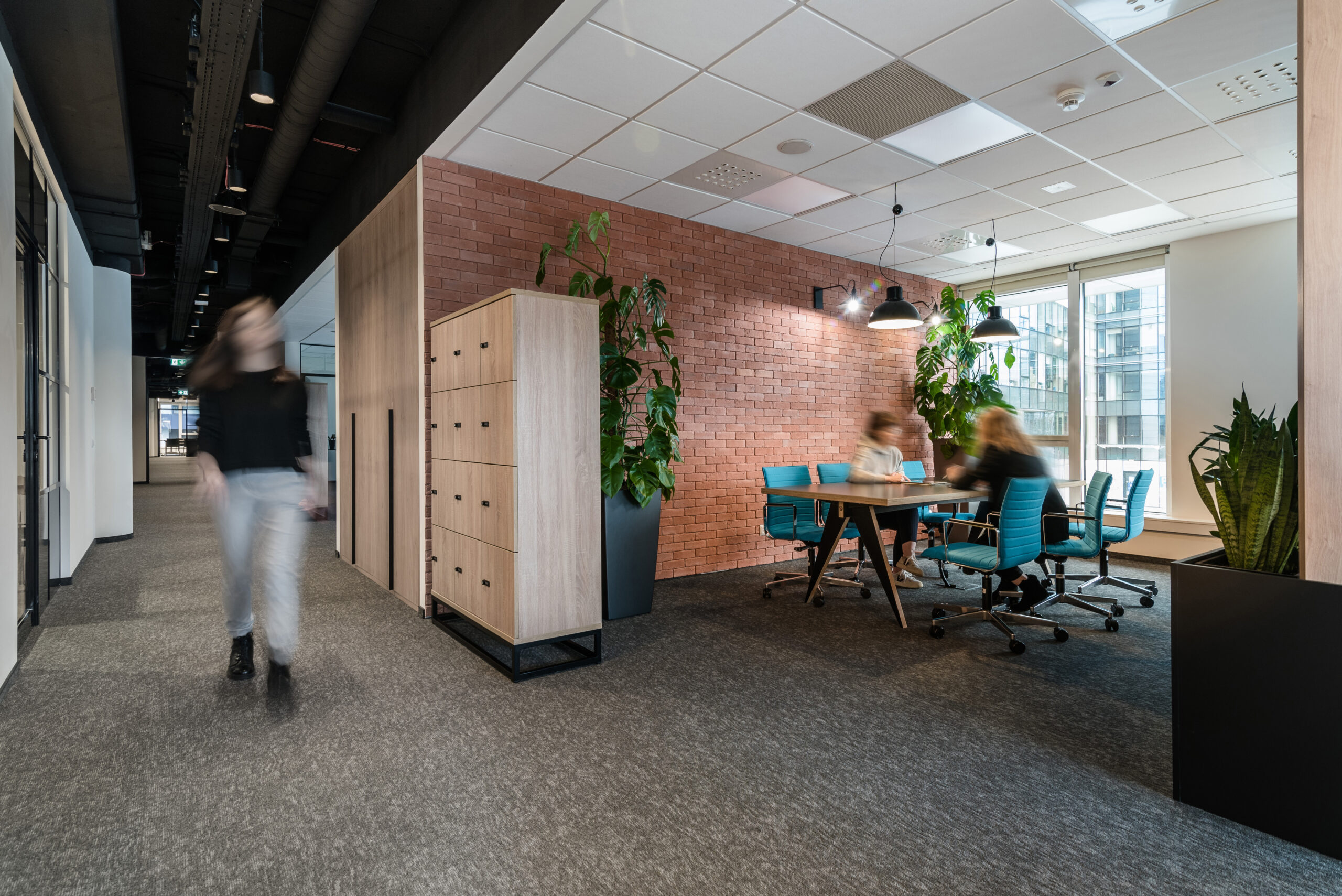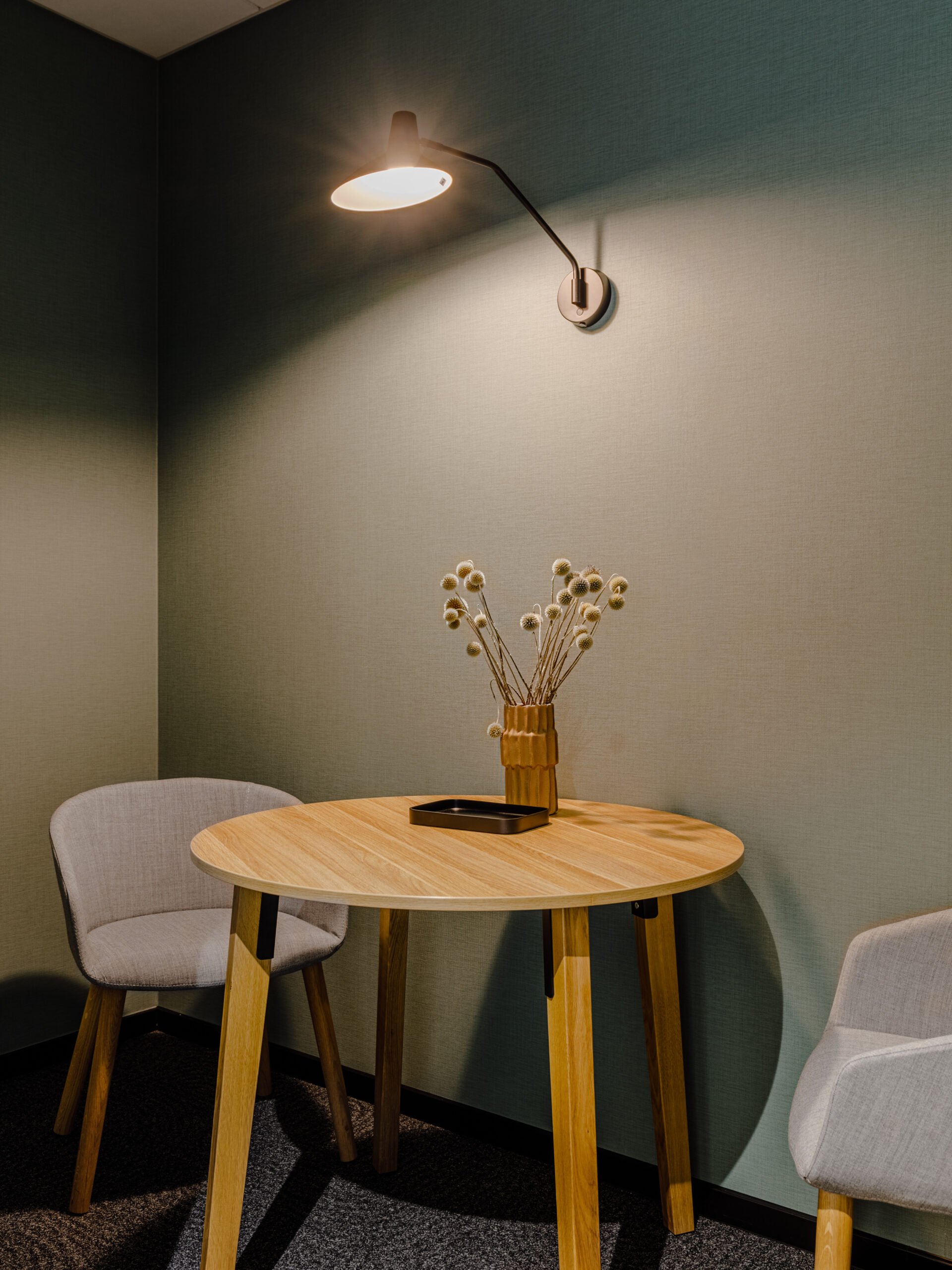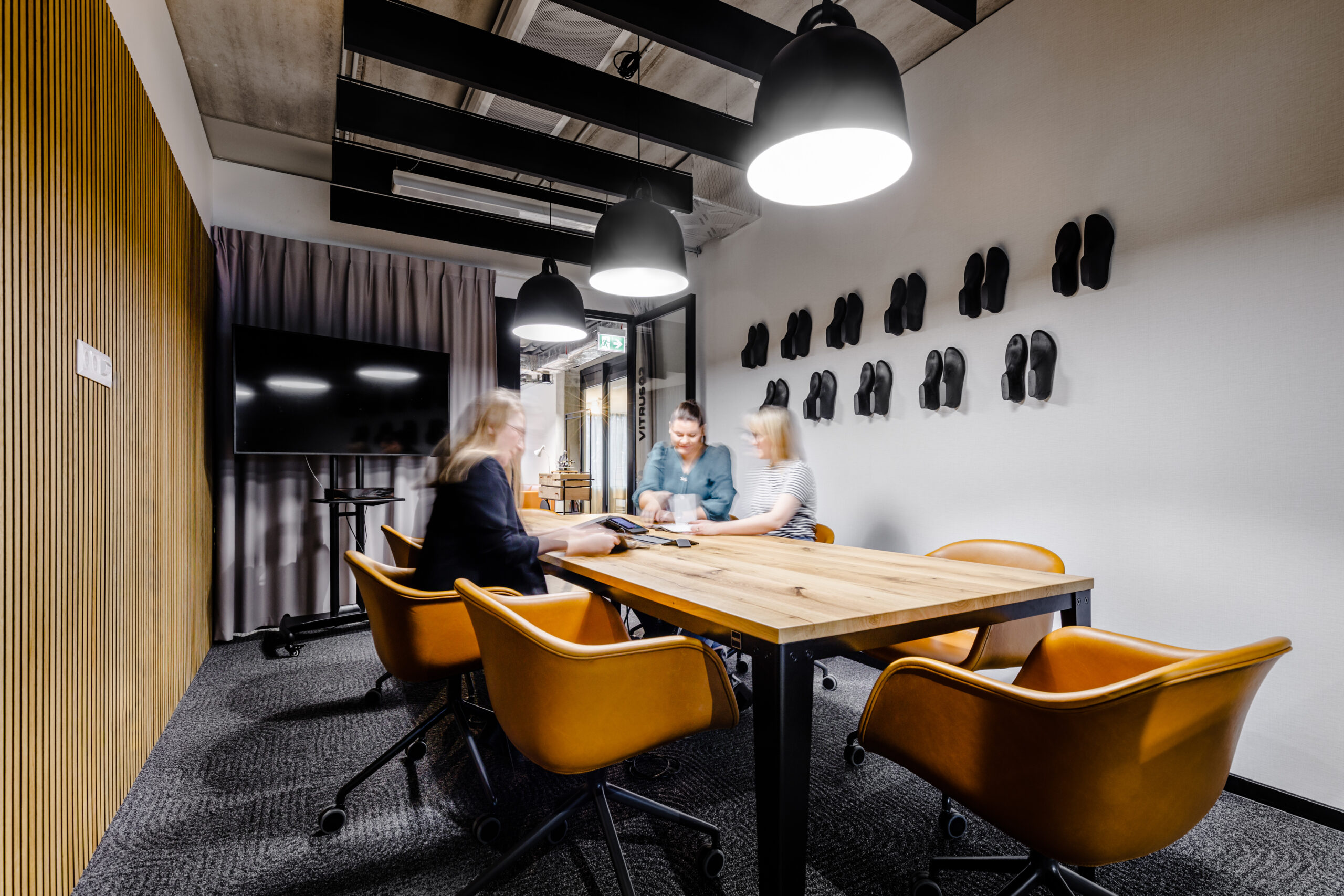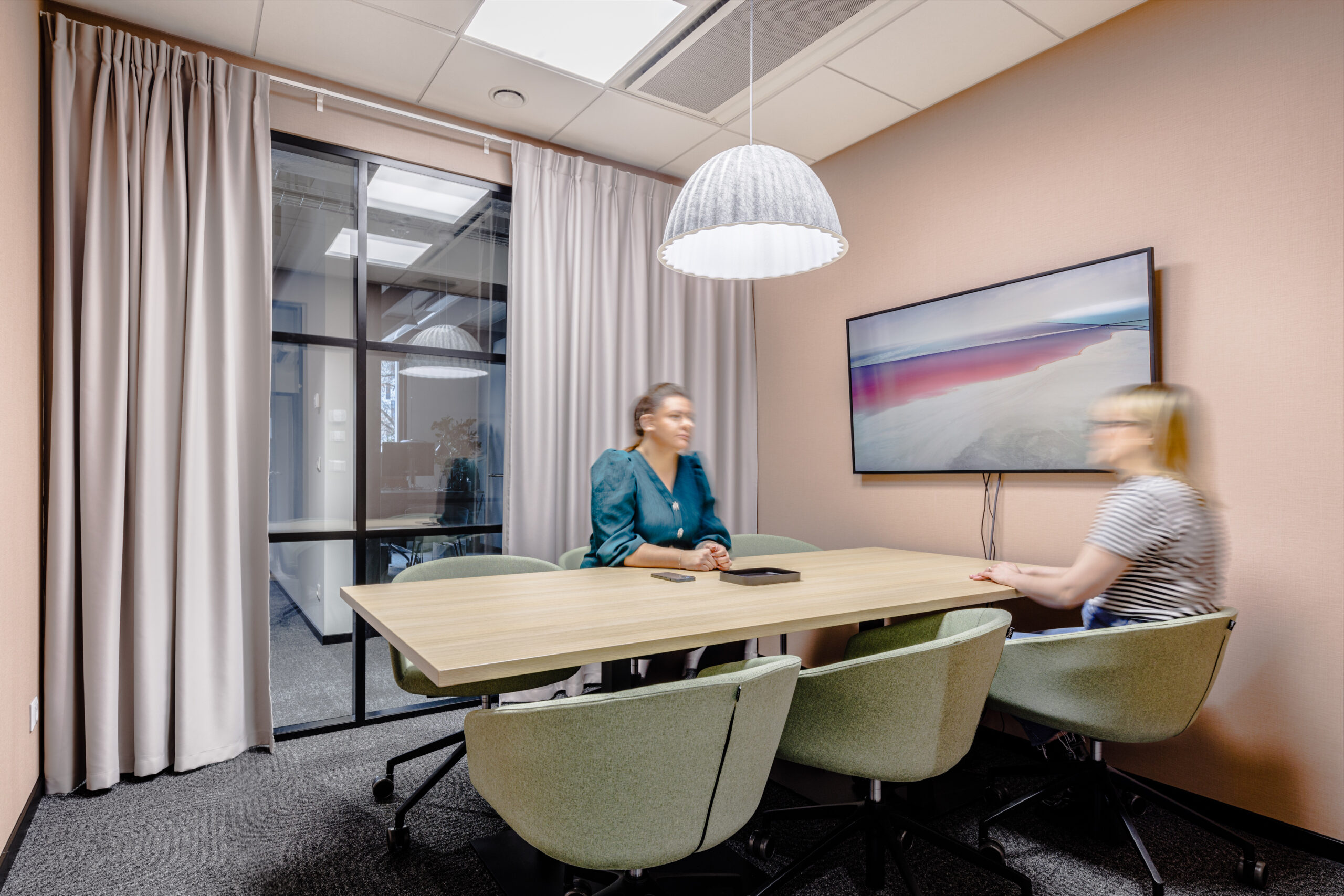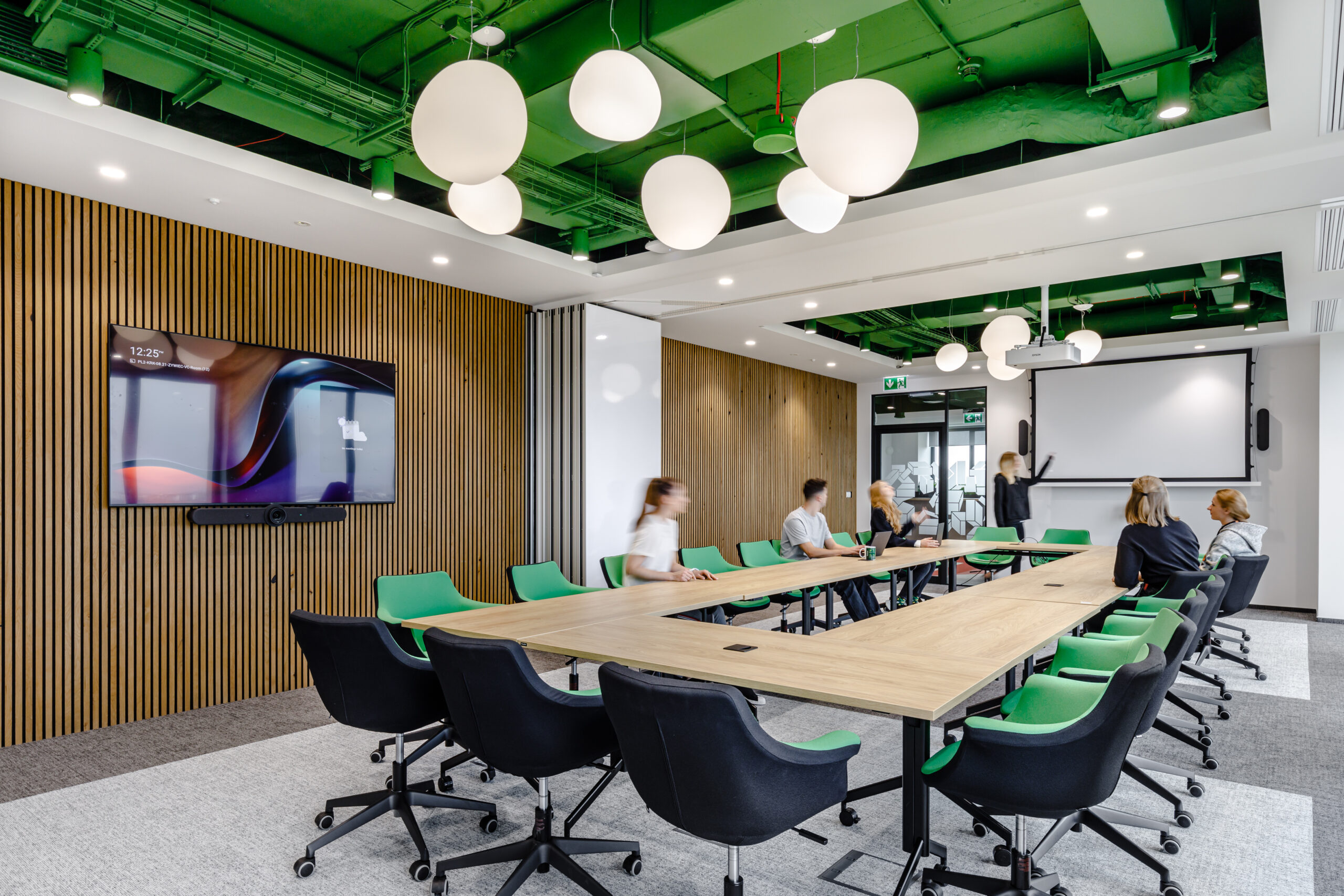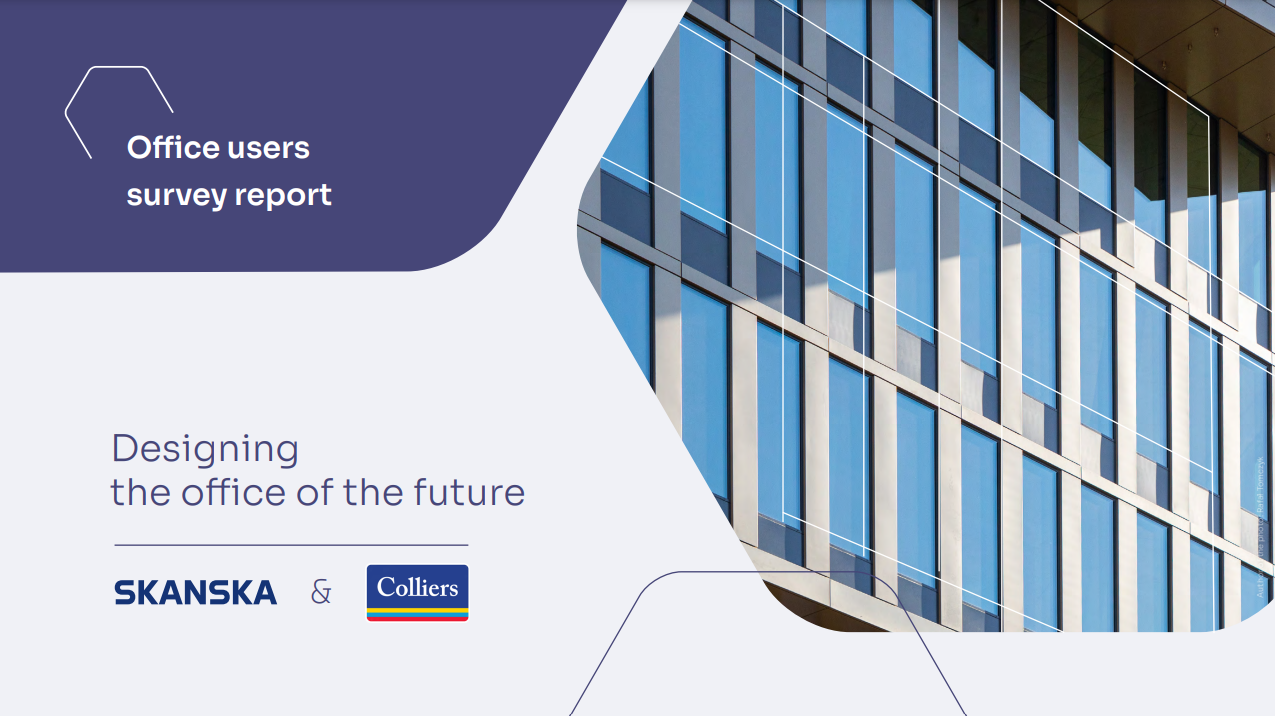3 areas of the work environment changed by new office user needs
Office design is no longer merely about working with steel, concrete and wood. A modern space should be designed with a deep analysis of human preferences and behavior. What should architects and commercial interior designers be aware of before arranging new offices that support employee efficiency?
The article is based on the results of a survey of office building users conducted by Skanska and Colliers in 2022.
From the article you will learn:
- how the hybrid has changed office work patterns,
- which buildings are most frequently visited,
- how to arrange the space so that employees want to spend time in it,
- when working from home wins, and when the office wins.
How has the hybrid changed office work patterns?
Remote work, which accompanied us in a pandemic setting, has evolved into hybrid work, which seems to have comfortably embedded itself in office reality. While this work model is still somewhat of a novelty, and the details of how organizations operate are still being refined, the fact remains that the work model in which we show up at the office less than 5 times a week is here to stay with us.
A new model of task organization is also slowly forming. Hybrid means not only that we show up at the office less often, but also that we show up for different reasons than before the pandemic. At home, we are much more likely to do activities that require quiet and focus, mostly related to individual work. When we show up at the office, on the other hand, it is usually to do teamwork or meet with colleagues.
One of the key topics discussed in organizations that have implemented a hybrid work model is the extent of remote work. Previous research conducted by Colliers Define shows that one in five organizations would like to see their employees in the office more often. This is why the Colliers Define team conducted a survey for Skanska that analyzes the various factors leading office users themselves to want to be in the office.
The online survey conducted between July and September 2022 involved 408 people working in 6 office buildings located in 5 cities (Warsaw, Wrocław, Cracow, Gdańsk and Łódź). The survey focused on 3 main areas:
- Building and building amenities
- Office space
- Home conditions for remote work
We were primarily interested in how different aspects of these 3 areas translate into employees’ willingness to show up at the office.
Building worth visiting – what does it mean?
There is a saying among those working in real estate that 3 things are important in real estate: location, location and once again location. But what does this mean in practice, from the point of view of office users?
From the standpoint of willingness to show up at the office, a good location is one that is easy and quick to reach. However, the analysis of the survey data revealed an interesting relationship. Willingness to show up at the office was related not so much to the commute time itself, but to the subjective assessment of how easy and convenient the commute is. An employee who takes 50 minutes to get to the office, but who travels on one bus, may therefore want to show up at the office more often than an employee who drives 40 minutes to the office, but using three different modes of transportation.
The amenities offered by the building and its immediate surroundings also play an important role. Among those most in demand are restaurants, a building canteen and a cafeteria. However, the COVID-19 pandemic has caused many such points to close, and their absence is now strongly felt by office users.
Appealing office – how to arrange the space so that employees want to spend time in it?
The data collected shows that office users do not want to come to the office if they feel that the current office space does not enable them to work effectively. So how should the space be arranged to support effective task performance?
Ensure privacy and effective work
First and foremost, the space should be designed to provide both visual and acoustic privacy. This does not mean, however, that a move away from open-plan offices should be made and individual offices should be provided for all employees. An office that provides a sense of privacy can be created by dividing the open space into smaller zones, separated by ancillary spaces such as conference rooms, which allow both confidential conversations and working in isolation. In addition, it is a good idea to reduce the number of desks in a row (limit them to a maximum of three) and separate them with partitions made of acoustic materials.
Examples of open space zones in Colliers Define projects:
Develop a design that offers a variety of spaces
There was also an analogous relationship between office evaluation and frequency of use based on the ease of finding a space in the office that suits the task currently being performed. Respondents who valued a variety of spaces suited to different types of tasks declared a higher frequency of appearing in the office (currently) and a greater desire to appear in the office (optimal scope of work from the office).
Several conclusions emerge that are useful in the design process of office spaces:
1. Work style
Investigate what types of activities are performed by employees, and which work styles prevail in teams. This will give you an idea of the needs of different people, and then determine what types of spaces should be provided so that these activities can be performed comfortably. For teams that make a lot of phone calls and participate in video conferences, while also having to prepare bids and comment on contracts, provide an intimate open space with higher acoustic standards and access to a quiet area or focus rooms.
Examples of quiet zone and focus rooms in Colliers Define projects:
2. Activity-based working:
While designing, follow the principles known as activity-based working. The idea is to design according to a certain logic, assuming the coexistence of zones for focused work, areas for workshops, zones for creative work (e.g., intended for brainstorming), or rooms adapted for meetings and teleconferences. The premise of this office design methodology is to tailor spaces for different types of activities in such a way that employees, performing them at the same time, do not disturb each other.
Examples of creative zones and rooms adapted for meetings and teleconferences in Colliers Define projects:
3. Mobile solutions:
Opt for mobile solutions so that employees can adapt the space to their current needs. This means, for example, being able to rearrange a conventional conference room with a single table so that workshops involving group work can be held.
Examples of mobile solutions in Colliers Define projects:
Foster collaboration
Hybrid work has resulted in people coming to the office primarily to collaborate. This view is shared by both employers and employees. One might expect, therefore, that users would be more likely to visit an office that supports collaboration and facilitates interaction between employees. However, is this really the case?
The survey data shows that in order for users to want to visit an office, it must first and foremost provide a variety of spaces that are suitable for different types of tasks, as well as provide opportunities for focused work, confidential conversations and a sense of privacy. This apparent contradiction stems from the fact that collaboration in a hybrid work model often means confidential one-on-one meetings, or hybrid meetings in which a small group of people participate from the office and other participants join remotely. Fostering collaboration is an important function of a hybrid office, but it is an intentional and controlled collaboration, not an accidental one.
Examples of rooms providing a sense of privacy in Colliers Define projects:
Working from home – when does it win and when does it lose against the office?
According to the survey, the respondents’ personal situation was another factor that had a strong influence on how much time they spent in the office. The ability to have an appropriate level of silence and the lack of conflict between work and personal life played a key role. People who when working remotely have no problem separating their personal and professional lives and have conditions at home that allow them to work in peace and quiet are more likely to use the home office. Issues related to technology, or the equipment at the home workstation, are less important to the frequency of appearing at the office.
Office transformation under the influence of changing employee needs
Hybrid work has changed for good both how often we show up at the office, as well as the purpose and use of the space. In the vast majority of organizations, working from the office five days a week is no longer the default model. However, not all organizations are ready to work remotely to a greater extent, and some are attempting to draw employees into their offices, encountering strong resistance.
The solution to this problem is to properly take care of those elements of the work environment that make employees themselves decide to show up at the office more often. In practice, this comes down to creating a work environment that is suited to the new needs of office users. An environment that is diverse, comfortable and adapted to different types of users.
Download the report and learn more about new office users needs
If you don’t see “Download report” button, please clear your cookies or
download report from this site »
About the companies
Colliers is a global leader in real estate services and investment management. We are a leading company offering a wide range of the highest quality services. With operations in 63 countries, more than 17,000 of our enterprising professionals work collaboratively to maximise the value of real estate for tenants, investors and investors.
Define. Design. Deliver. A part of Colliers in Poland is the Colliers Define service platform. It consists of a diverse team of consultants, architects, designers and engineers, which in the comprehensive process of Define. Design. Deliver. transforms commercial spaces and real estate to make them user-friendly and efficient for business.
Skanska Property Poland is an innovative developer of green, timeless office buildings. It builds open, vibrant spaces where employees feel comfortable. Skanska’s office projects are certified with LEED, WELL Core & Shell, as well as WELL Health-Safety Rating. In addition, Skanska’s new investments in Poland are certified as “Barrier-Free Facilities,” which proves adaptability for use by people with various needs – including those with disabilities or parents with young children.
Skanska Property Poland has been operating in Poland since 1997. It conducts operations in seven markets: in Warsaw, Wrocław, Poznań, Łódź, Cracow, Katowice and the Tri-City.
Skanska Poland also functions as:
- retail general contractor
- office general contractor
- warehouse general contractor
